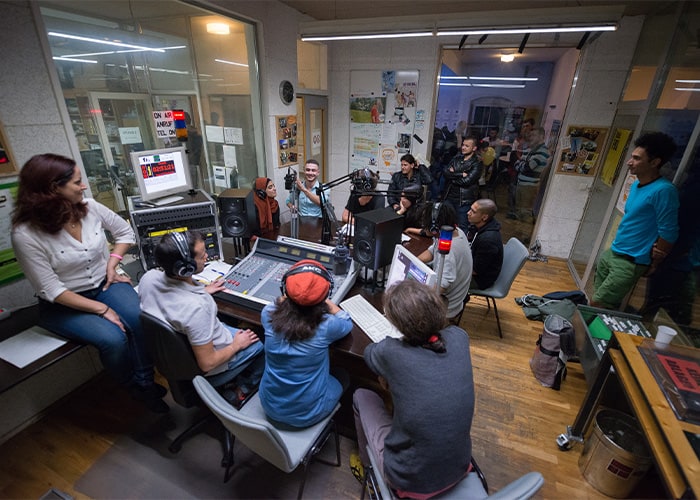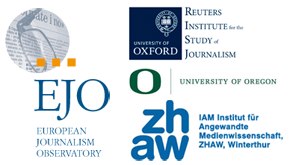
Community media is considered an indispensable part of Austria’s media landscape
In Austria, non-commercial broadcasters, also known as community media, are considered an indispensable part of the media landscape. Established in 1998, they are not profit-oriented, do not depend on ads to fund their content, and focus on improving community engagement, media literacy, and diversity. Last year, the Austrian parliament approved an increase in funding for the 18 outlets in this category.
However, the media-political position of non-commercial broadcasters is precarious compared to that of public broadcasting services and private-commercial media stations. For example, in the spring of 2022, the government of Vienna cut off funding for the community TV station Okto in the middle of the current funding period. As a result, the station had to reorganise itself and look for new financing options to keep broadcasting.
This existential threat facing community media raises the question of their importance. That is why we decided to examine their ability to contribute to democracy and create “public value” – in simple terms, how an organisation or activity benefits society. The term was coined by Harvard professor Mark Moore in 1995. According to Moore, the public good has to be valued by the public to have public value.
The public value of community broadcasting
We decided to test why and how public value is generated in Austria. Though Moore focuses on the obligation of public broadcasting services, we have seen that the community broadcasting model in Austria is better structured to achieve the participation and engagement elements of public value. Since the mid-1990s, they have organised themselves bottom-up out of civil society. The 15 radio and three TV stations see themselves as a place where interested people from the population, associations, and NGOs come together and create programmes based on their own ideas. These outlets provide the technical infrastructure, offer training and a network, and receive content to broadcast in return. So, we decided to focus on these community broadcasters in our study Public Value of Non-Commercial Broadcasting, funded by Rundfunk und Telekom Regulierungs-GmbH.
To measure whether and how community media generate public value, we held 15 focus groups with broadcasters, examining five functions linked to democratic values and achieving good outcomes for the public. We defined these functions as the media’s ability to articulate these values, to complement and reflect them, to encourage and facilitate public participation, to promote media literacy, and to seamlessly converge and merge traditional and modern media formats and outputs. Our research also considered the political and legal framework and contexts in which non-commercial broadcasting operates in Austria.
Bringing democracy to life
The results of our analysis show that Austrian community media generate public value, particularly in articulating and complementing democratic values and in facilitating participation. These findings underscore their importance and the fact that their “open access” effectively promotes and supports freedom of expression and empowerment, especially for groups that are underrepresented in the public sphere.
In their programmes, they deal with topics not represented in the mainstream media or public broadcasting, producing a lot of content about art and culture in the local area and about social, political and ecological issues from the perspectives of those affected. These broadcasters are rooted in their local area and communities, empowering people to help shape their social and natural environment and supporting community cohesion.
However, community media generate public value by acting, not only as broadcasters, but also as media education institutions. They are particularly interested in working with children and young people, for example, in the form of school workshops. In addition, community media outlets offer training courses to help improve programme makers’ digital and other skills. They also use social media to support audience engagement and provide content that can be downloaded. However, some of their activities, such as the promotion of media education, have been hampered for a long time by funding challenges.
Since their emergence 25 years ago, community media outlets in Austria have developed a common self-image that is reflected in the realisation of diverse public values and has thus undoubtedly contributed to their institutionalisation as the third pillar of the broadcasting sector. Wherever non-commercial radio and television stations operate, they enable communicative and social participation, ensure diversity in the local area, represent social hubs and promote a critical approach to media. In short, they bring democracy to life.
Learn more about the study here.
Opinions expressed on this website are those of the authors alone and do not necessarily reflect or represent the views, policies or positions of the EJO or the organisations with which they are affiliated.
If you liked this story, you may also be interested in: Student Perspective: Tackling hate speech and the harmful narratives of war in Bosnia and Herzegovina
Tags: Austrian media, community journalism, Journalism and Democracy, Journalism's funding crisis














































